Music, History, and Culture in Sephardi Jewish Prayer Chanting
Abstract
:1. Introduction
1.1. Jewish Liturgy
1.2. Jewish Prayer Chanting
1.3. “Flowing Rhythm” in Jewish Prayer Chanting
1.4. Sephardi Jews
2. Prayer Chanting of the Jerusalem–Sephardi Tradition
Musical Characteristics of Jerusalem–Sephardi Prayer Chanting
3. Spanish–Portuguese Prayer Chanting
Musical Characteristics of Spanish–Portuguese Prayer Chanting
4. Discussion
5. Conclusions
Funding
Institutional Review Board Statement
Informed Consent Statement
Data Availability Statement
Conflicts of Interest
| 1. | Today there are varied styles of music performed by Jewish musicians, both religious and non religious. |
| 2. | The term “prayer chanting” I use throughout this article is not an emic term but a translation of the term I use to define this liturgical genre. |
| 3. | Although a significant part of the texts of the Jewish liturgy was shared by most Jewish communities, various communities gradually developed their own style of texts in prayer services (nusakh ha-tefilla) based on their own practices. Prayer books continue to change and evolve even today. |
| 4. | See (Schleifer 2001) and the extensive bibliography there. |
| 5. | Idelsohn (1923, pp. 33–38) describes the liturgical tradition of Aleppo Jews at the beginning of the twentieth century as an existing and crystallized tradition. |
| 6. | The peoples of the Middle East share a history that has bound them together over the generations and created a musical tradition with common foundations. The maqam system is the most central element in this musical culture (Touma 1996; Shiloah 1999). The maqam includes two basic elements: the first is a fixed sound system, and the second is melodic patterns based on this sound system. These patterns form the basis of an improvisation method that is unique to Arab music. The sound material of the maqam is based on a modal system that includes 24 intervals (24 quarter tones) within the octave (Marcus 1993). These intervals, which are smaller than a whole tone and larger than half a tone, appear in a limited number of tones and between fixed degrees in the maqam modal systems (Shiloah 1981). |
| 7. | Seroussi (2013, pp. 1–24) claims that the application of the maqam system by Jews in liturgical and paraliturgical rituals is a result of Muslim–Jewish interaction over hundreds of years. In his opinion, the maqam in Jewish religious music is “a uniquely Jewish maqam”. |
| 8. | Cantor Abraham Caspi (1927–2010) was born in Jerusalem. He learned the Jerusalem–Sephardi liturgy and the use of the maqam system in the liturgy from the recognized Sephardi cantors in Jerusalem in the 1940s and 1950s. In 1960, he was appointed as the chief cantor of Har Zion synagogue in the old city of Jerusalem, and he served there untill he died. Untill this day he is considered one of the most important experts and teachers of Jerusalem–Sephardi liturgy. |
| 9. | Cantor Ezra Barne’a was born in Jerusalem in 1935. He is an educator, cantor, and an expert in the Jerusalem–Sephardi liturgy. He is the founder of the “School of Jewish Cantorship” in Jerusalem. Mr. Barne’a served as a cantor from a very young age in several Jerusalem–Sephardi synagogues. |
| 10. | Rabbi and cantor Abraham Lopes Cardozo (1914–2006) was born in Amsterdam to a well-known Spanish–Portuguese family. In 1939, he became a teacher and cantor in Dutch Guiana, now Surinam. He moved to New York in 1946 to join the staff of the Shearith Israel synagogue. Rabbi Cardozo published several books of liturgical music of the Spanish–Portuguese tradition, including “Selected Sehardic Chants” (Cardozo 1991) and “Sephardic Songs of Praise” (Cardozo 1987). He was considered an extremely important figure in transmitting this liturgy. |
| 11. | Cantor Daniel Halfon (b. 1955) is an expert in the Spanish–Portuguese liturgy. He was born in London to a Sephardi family from the Balkans and grew up in the Spanish–Portuguese community. He studied for many years with the well-known cantor Eliezer Abinun. He also studied with Abraham Lopes Cardozo in New York and learned the Amsterdam and New York versions of the liturgical traditions. Since the 1980s, cantor Halfon has sung in major synagogues of the Spanish–Portuguese tradition in London, Amsterdam, and New York. He currently lives in Jerusalem. |
| 12. | This recording is documented in The National Sound Archive of Israel National Library in Jerusalem. |
References
- Adler, Israel. 1966. La pratique musicale savante dans quelques communautés juives en Europe aux XVIIe Et XVIIIe siècles. Paris and La Haye: Mouton & Co., 2 vols. [Google Scholar]
- Aguilar, Emanuel, and David A. De-Sola. 1857. The Ancient Melodies of the Liturgy of the Spanish and Portuguese Jews. London: Wessel & co., Schot & co., Duncan, Davidson & co. Groombridge & Sons. [Google Scholar]
- Alvarez-Preyre, Frank. 1994. Towards an Interdisciplinary Study of Jewish Oral Traditions. Yuval 6: 11–33. [Google Scholar]
- Bodian, Miriam. 2008. Hebrews of the Portuguese nation: the ambiguous boundaries of self-definition. Jewish Social Studies 15: 66–80. [Google Scholar]
- Cardozo, Abraham Lopes. 1987. Sephardic Songs of Praise. New-York: Tara Publications. [Google Scholar]
- Cardozo, Abraham Lopes. 1991. Selected Sephardic Chants. New-York: Tara Publications. [Google Scholar]
- Corbin, Solange. 1961. La cantilation des rituels chrétiens. Revue de Musicologie 47: 4–36. [Google Scholar] [CrossRef]
- Diaz-Mas, Paloma. 1992. Sephardim–The Jews from Spain. Chicago & London: The University of Chicago Press. [Google Scholar]
- Elbogen, Y. Moshe. 1988. The Jewish Prayer in Its Historical Development. Tel-Aviv: Dvir Publication. First published 1913. (In Hebrew) [Google Scholar]
- Frigyesi, Judit. 1993. Preliminary Thoughts toward the Study of Music without Clear Beat: “Flowing Rhythm” in Jewish Nusah. Asian Music 24: 59–88. [Google Scholar] [CrossRef]
- Idelsohn, Abraham Z. 1923. Gesänge der orientalischen Sefardim (Hebräische-orientalischer Melodienschatz IV). Jerusalem, Berlin and Wien: Benjamin Herz Pub. [Google Scholar]
- Idelsohn, Abraham Z. 1929. Gesänge der marokkanischen Juden. HOM V. Jerusalem, Berlin and Wien: Benjamin Herz Pub. [Google Scholar]
- Idelsohn, Abraham Z. 1992. Jewish Music in its Historical Development. New York: Dover Publication, Inc. First published 1929. [Google Scholar]
- Kligman, Mark L. 2009. Maqam and Liturgy–Ritual, Music and Aesthetics of Syrian Jews in Brooklyn. Detroit: Wayne State University Press. [Google Scholar]
- Marks, Essica. 2002. Music and Society in ‘Aboab” Synagogue in Safed. Ph.D. thesis, Bar-Ilan University, Ramat Gan, Israel. [Google Scholar]
- Marks, Essica. 2007. A song of Dawn–The Jerusalem Sephaedi Baqqashot at the Har Tzyion Synagogue. Recordings and notes by Essica Marks. Jerusalem: The Jewish Music Research Centre, The Hebrew University of Jerusalem. [Google Scholar]
- Marks, Essica. 2014. The Influences of the Musical Tradition of Aleppo’s Jews on the Jerusalem-Sephardi Liturgical Style. Edited by Y. Harel. Ramat-Gan: Bar-Ilan University Press, pp. 245–66. (In Hebrew) [Google Scholar]
- Marks, Essica. 2016. Historical Aspects of the Liturgical Music of the Spanish-Portuguese Jews. Journal of Ethnography and Folklore 1–2: 107–23. [Google Scholar]
- Schleifer, Eliyahu. 2001. Jewish Music–Liturgical and paraliturgical: Ashkenazi. In The New Grove-Dictionary of Music and Musicians. New York: Grove, vol. 13, pp. 51–59. [Google Scholar]
- Marcus, Scott L. 1993. The Interface between Theory and Practice: Intonation in Arab Music. Asian Music XXIV/2: 39–57. [Google Scholar] [CrossRef]
- Seroussi, Edwin. 2001. New Perspectives on the Music of the Spanish-Portuguese Synagogues in North-Western Europe. Studia Rosenthaliana 35: 297–309. [Google Scholar]
- Seroussi, Edwin. 2013. Judeo-Islamic Sacred Soundscapes: The "Maqamization" of the Eastern Sephardic Liturgy. Edited by Jews and Muslims in the Islamic World. Bernard Cooperman and Zvi Zohar: University of Maryland Press, pp. 1–24. [Google Scholar]
- Shiloah, Amnon. 1981. The Arabic Concept of Mode. Journal of the American Musicological Society 34: 19–42. [Google Scholar] [CrossRef]
- Shiloah, Amnon. 1992. Jewish Musical Traditions. Detroit: Wayne State University Press. [Google Scholar]
- Shiloah, Amnon. 1999. Music in the World of Islam–A Socio-Cultural Study. Jerusalem: Bialik Publications. (In Hebrew) [Google Scholar]
- Touma, Habib H. 1996. The Music of the Arabs. Portland and Oregon: Amadeus Press. [Google Scholar]
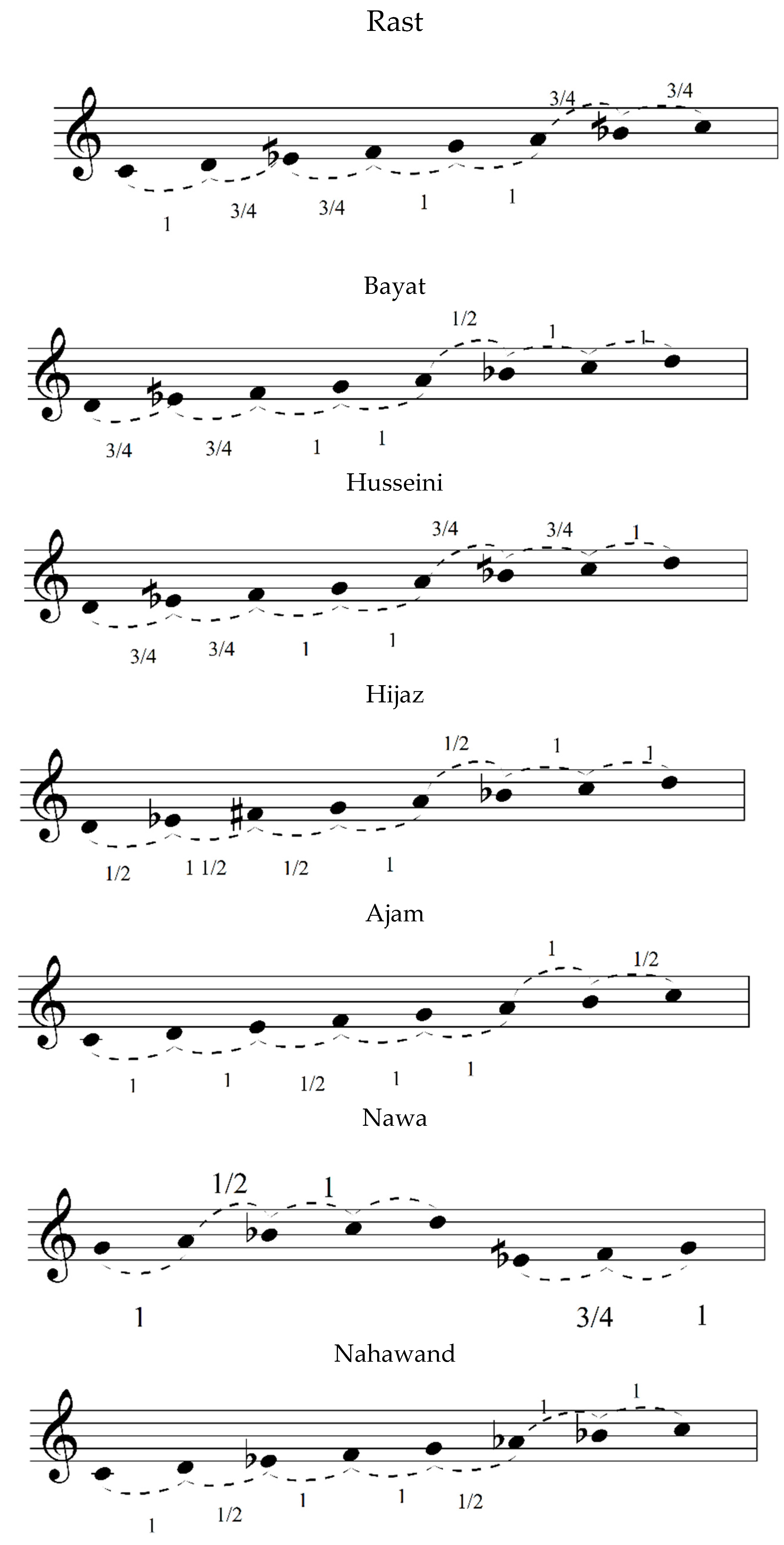
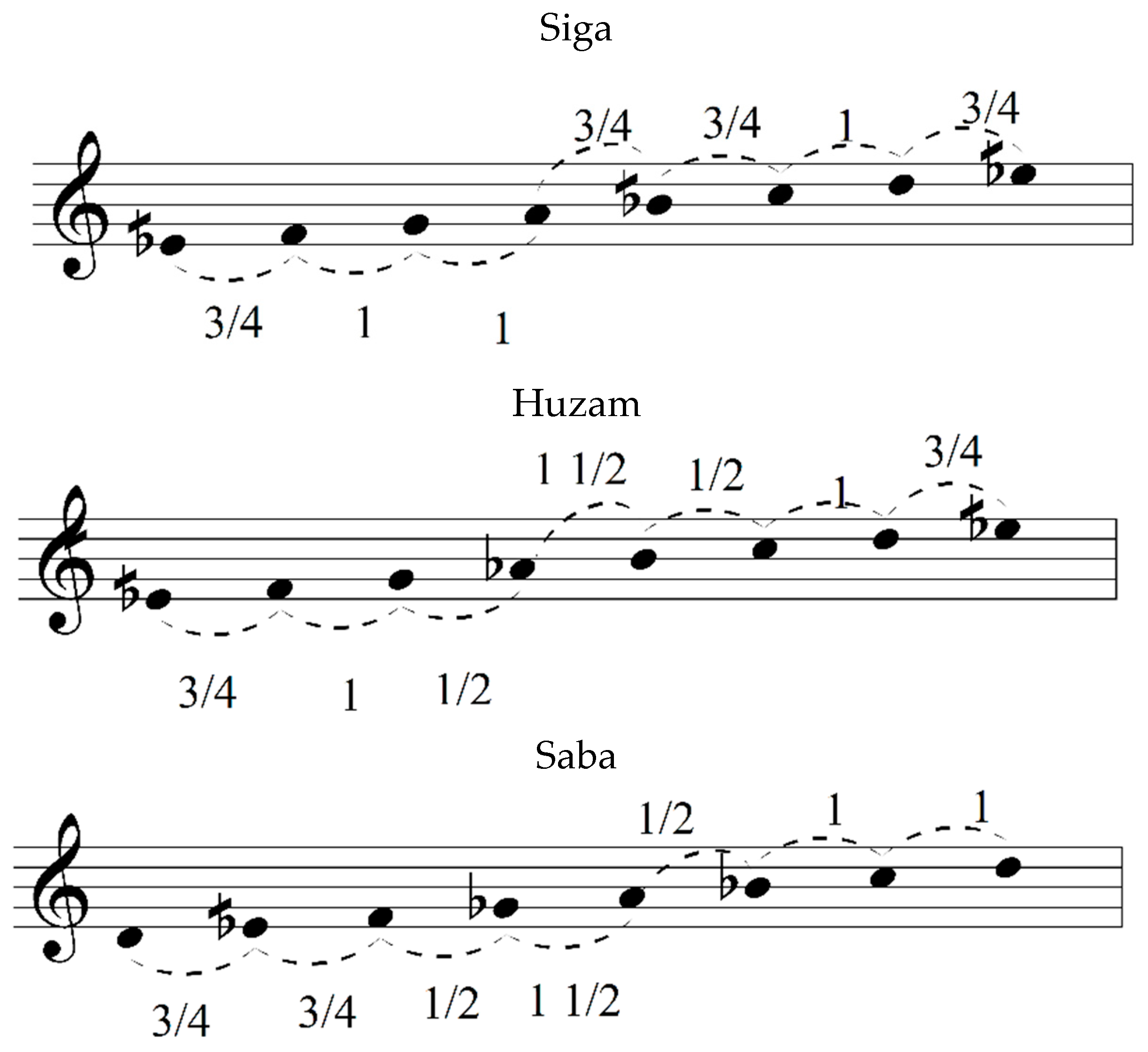

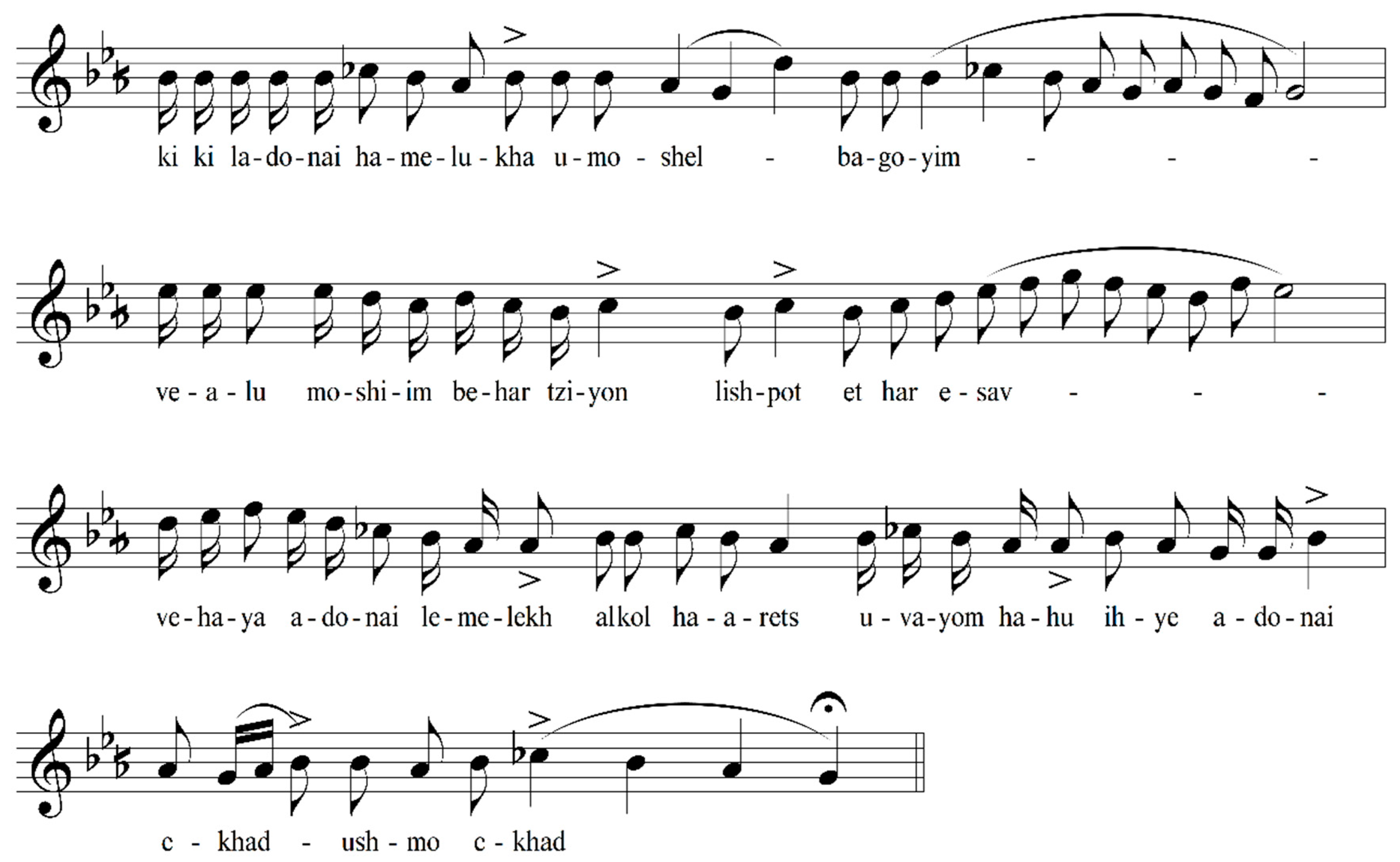
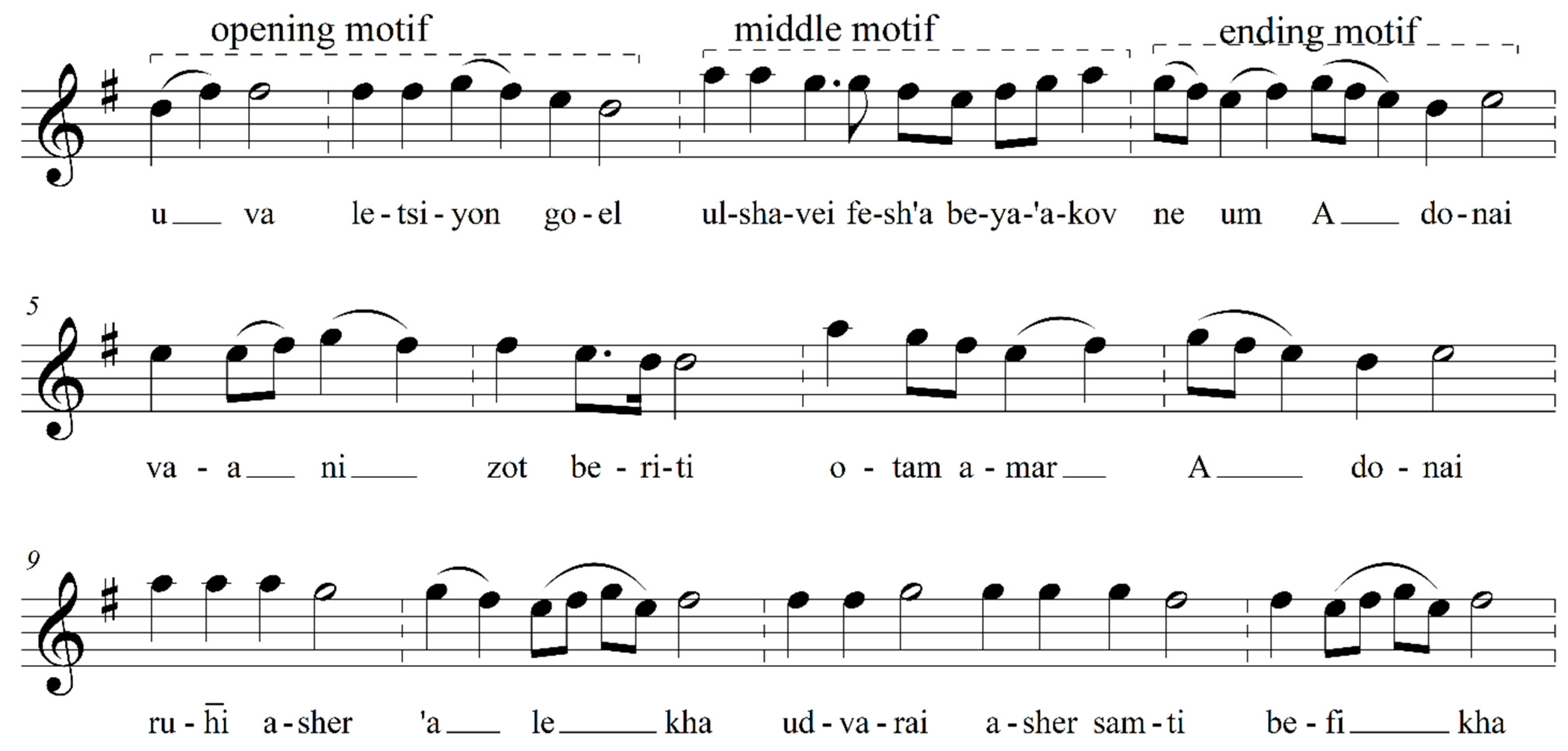
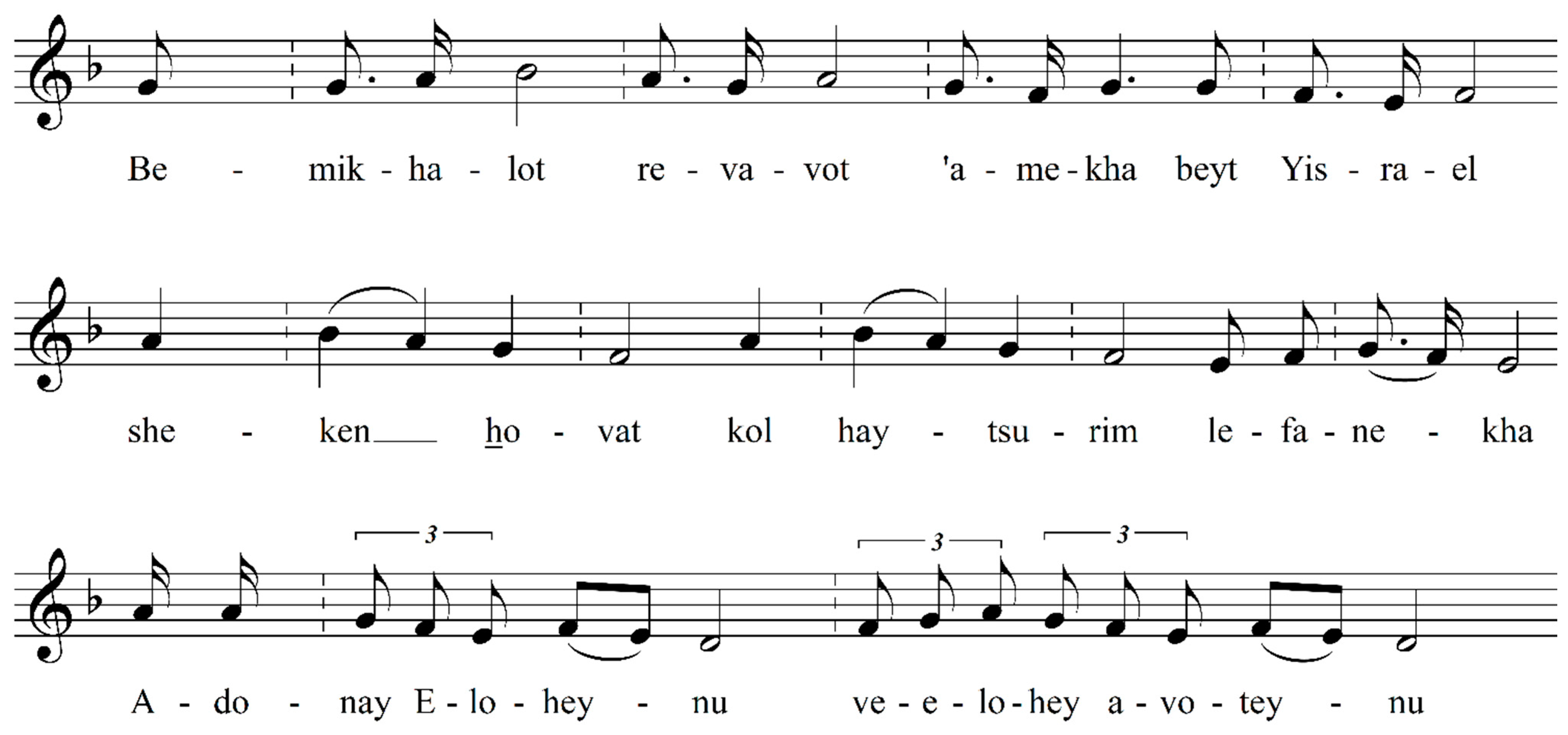

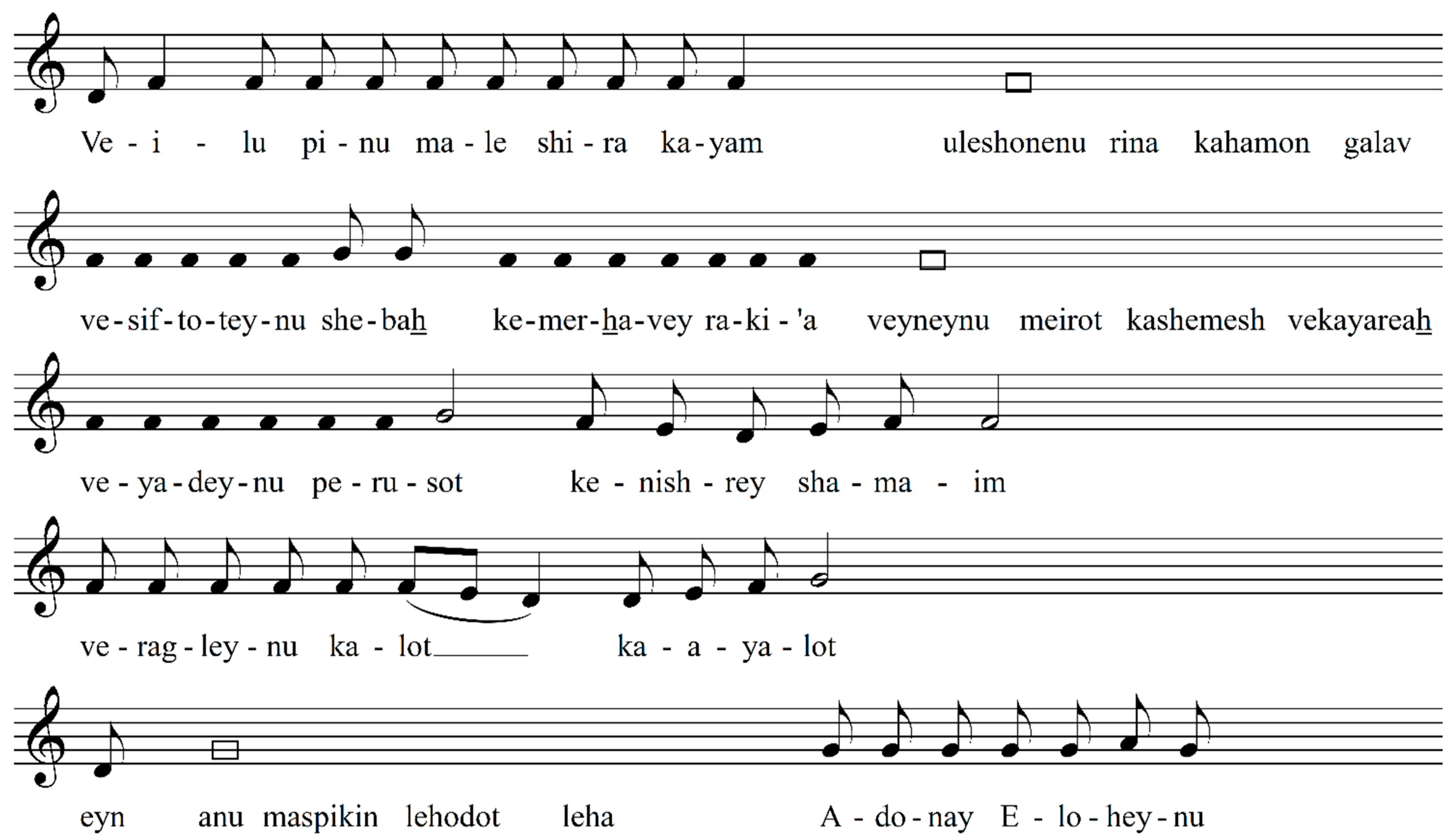
Publisher’s Note: MDPI stays neutral with regard to jurisdictional claims in published maps and institutional affiliations. |
© 2021 by the author. Licensee MDPI, Basel, Switzerland. This article is an open access article distributed under the terms and conditions of the Creative Commons Attribution (CC BY) license (https://creativecommons.org/licenses/by/4.0/).
Share and Cite
Marks, E. Music, History, and Culture in Sephardi Jewish Prayer Chanting. Religions 2021, 12, 700. https://doi.org/10.3390/rel12090700
Marks E. Music, History, and Culture in Sephardi Jewish Prayer Chanting. Religions. 2021; 12(9):700. https://doi.org/10.3390/rel12090700
Chicago/Turabian StyleMarks, Essica. 2021. "Music, History, and Culture in Sephardi Jewish Prayer Chanting" Religions 12, no. 9: 700. https://doi.org/10.3390/rel12090700
APA StyleMarks, E. (2021). Music, History, and Culture in Sephardi Jewish Prayer Chanting. Religions, 12(9), 700. https://doi.org/10.3390/rel12090700




